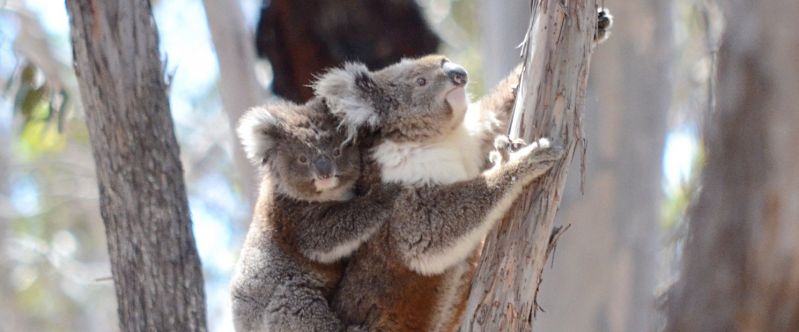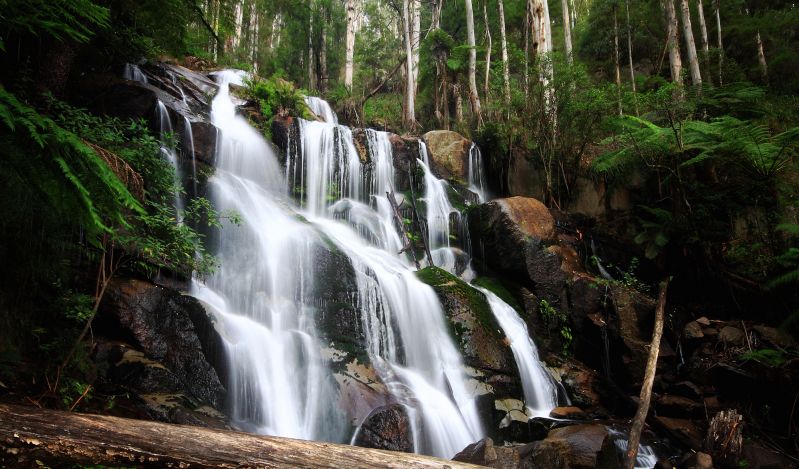Janine Duffy, along with Roger Smith, founded Echidna Walkabout Nature Tours in 1993, with the organisation becoming internationally-recognised in wildlife in the wild conservation travel, and winner of the 2014 World Responsible Travel Award.
We recently sat down with Janine recently to find out more about her passion for wildlife and conservation.
What do you enjoy most about being a wildlife guide?
Seeing the animals! Being out there on days where you wouldn’t choose to be out there - it might be wet, it might be cold and you’re still out there and you’re still seeing amazing things.
I think it’s underestimated how much responsible tourism can positively affect the lives of people. It’s adult education. It’s the way adult people choose to learn about the world. I think we’re educators and we’re doing it in the nicest possible way; with guest's family, having fun out in nature - all of those good things, which enrich the experience and etch it in the traveller's memory.
What do the You Yangs and East Gippsland regions mean to you?
I’ve had a connection with the You Yangs for a really long time since I first discovered that wildlife was my thing. My partner and I went there on our first date - and I didn’t realise then that I would end up spending so much of my time there with the Koalas. It’s a dry, open woodland which I have always loved because I grew up in a town called Wangaratta which is just like that. I got used to it and I just think it’s extremely beautiful - it’s the kind of landscape that I think people expect Australia to look like. White gum trees, the grass underneath, open vistas - it’s absolutely beautiful.
East Gippsland is the complete opposite to that. In some places, it’s tall mountain forest (some of it even gets snow in winter), there’s rainforest down near the coast and there are heathlands. While it’s not the landscape I grew up in, it’s got so much wildlife that I just get so excited every time we go there. Not only that, there’s very few birders or wildlife people going there who are reporting sightings, so every trip you do to East Gippsland, you could see something that is significant to science that hasn’t been seen before in that area, or a sub-species which isn’t known to be there!
And this goes back to what you mentioned earlier about visiting at times when you generally wouldn’t at leisure…
Yeah it is quite amazing and you go there so regularly - you start to feel the rhythms of the place - it’s fabulous!

Grasslands of the You Yangs region - image courtesy of Echidna Walkabout Nature Tours
Have you seen any changes across the ecosystem - good or bad?
Yes, and I’m afraid it’s all bad. It is a strong message to us that now is the time to start really taking action. There’s something both wonderful and terrifying about seeing a forest that you’ve known for 10, 15 or 20 years and knowing what it looked like back then and knowing what it looks like now.
Even though what we see now is a much drier forest which is struggling to survive, the fact that we know this is actually very powerful, because most people don’t. Most people have not been going to the same forest and monitoring it and photographing it for 15 or 20 years. Knowledge is power - when we have that knowledge, we can take action to turn it around. If we don’t have that knowledge, it just goes by the wayside.
So one of the ways you’re helping fight this is through educating your guests?
The thing that matters most to us, is not that they go home thinking 'Australia is wonderful, Koalas are amazing' - the most important thing to us is that they go home and look at their own backyard and go this is amazing!
I wonder what Janine would’ve said about that Squirrel or that Deer. If guests can take home some of that feeling, that empathy, that’s a place where they can take action themselves. They can even make changes in their own normal life because of what they’ve seen with us. I think from my own travels, I’ve found that travelling is a time when your mind is the most open to new ideas. That’s part of the reason you travel, you want to be open and you’re outside of your comfort zone, so you’re doing things differently.
I went to Sweden, one of many times and rode a bike with my friend down to the shops - because they do that. It occurred to me when I got home that I didn’t ride my bike at home and why? So I started riding my bike, just because my mind was open to it because I was travelling!
What are you most proud of when you’re showcasing this region to guests from across the world?
I’m most proud that we know what’s happening to our wildlife. It was a dream of mine, when I started out, to know a Koala it’s whole life - from a baby all the way to a very, very old lady - and we have got that Koala now.
Her name is Pat, and she is the mother of Clancy (another Koala that Janine and her team have been studying). She is 14 years old this year - I hope she’s got a few more years in her! I remember her as a wee tiny little joey, and I’ve learned so much from watching her and watching others like that. If a researcher had said to me in 1992 that they knew a Koala their entire life and indeed whole communities of Koalas like that, I would’ve thought that they were just the ‘ant’s pants’ - and now I know that! I just think that’s great!

Koalas in the You Yangs region - image courtesy of Echidna Walkabout Nature Tours
What’s your favourite wildlife species to share with your guests? I’m guessing it’s probably the Koala?
My favourite wildlife is whatever I’m looking at, at the time - so when I’m with the Koalas, for sure! I’ve made my name around Koalas, it’s true. But, Eastern Grey Kangaroos, oh wow! No, anything at all. I’m very disloyal - I love them all!
What are the most surprising elements guests find about the region?
The thing that gets nearly everyone is Australian animals, particularly marsupials, will make eye contact with you and connect. Most animals around the world don’t do that. They seem to be reluctant to make eye contact, they’ll turn away from you - deer, lions and so many animals around the world.
I’ve been trekking with the Gorillas in Uganda. It was amazing that they tried not to make eye contact with us at any time. The minute one does, you go wow! Australian animals do it all the time. Koala’s look straight at you and check you out. Kangaroos look straight at you and check you out. I just think marsupials are a different group of animals and maybe that’s why people want to touch them and feed them; which I don’t like and don’t approve of, but they feel that bond even across a distance.
What is your favourite place to visit?
If it’s wild and if it’s got animals - I love it! But Gippsland is a big favourite of mine. I just can’t get over how much I can see there and how much is yet to be seen. So I would go East Gippsland, that’s the tour I choose to do as often as I can.

Rainforest of East Gippsland
What is the best time of year to visit?
Spring. September and October - the nights are cool, but the wombats come out in East Gippsland when it’s cool and the reptiles are out in the daytime because it’s warm enough for them - so you get everything! The birds are starting to migrate down to the region and it's a prime time to hear bird calls and see their breeding behaviour. It’s just bedlam - and I just love it!

